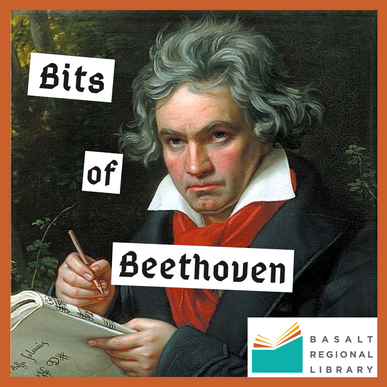|
“Music should strike fire from the heart of man, and bring tears from the eyes of woman.” -Ludwig van Beethoven  Hello Music Lovers of the Valley, The hope for this Bits of Beethoven blog post series, as described in my previous post, is that our exploration of Beethoven masterpieces will provide us with escape and sustenance during these difficult times. In our second entry, we will compare two piano sonatas from Beethoven’s middle period (1800-08), sometimes referred to as his Heroic Period: Sonata No. 21 in C major, Op. 53, known as the Waldstein, and Sonata No. 23 in F minor, Op. 57, known at the Appassionata. During his middle period, Beethoven was confronted with many obstacles to overcome—some personal, some resulting from this historical period. His deeply personal struggle was with the early stages of deafness, a struggle that ultimately resulted in self-imposed social distancing to avoid embarrassment. He was beset with anxiety over monetary problems caused by a dwindling number of students, due largely to his irascible personality. This forced him to court nobility to gain patrons in his new location, Vienna, and to seek out publishers that would pay respectable fees for his compositions. And he confronted these challenges while forced to cope with political instabilities caused by the French Revolution. Despite all, Beethoven “took fate by the throat” and creativity continued to flow from his pen. Changes in Beethoven’s middle period compositional style often appeared first in his piano sonatas. These recognized innovations were sometimes dismissed as eccentric. He extended the dimensions of the sonata and at the same time increased its complexities and technical difficulties. He explored extensively the coloristic qualities of the piano, including its highest and lowest registers, and employed a wide range of dynamics in both. His melodic style was described as heroic. Many of these changes to the sonata form reflect the tenets of the French Revolution. Let’s see how these changes are reflected in our chosen sonatas. The Waldstein sonata, Op. 53 (1803-04) was dedicated to Count Waldstein, Beethoven’s earliest patron and supporter in Vienna. It is structured in three movements marked Allegro con brio; Introduzione: adagio molto; and Rondo: Allegretto moderato-prestissimo. In the first movement, one hears deep chords opposing the high register of the right hand—reflecting stress and strain, an important element of Beethoven’s style. The slow movement, marked Introduzione, acts as a nebulous interlude between the two large outer structures. For the Waldstein, I recommend listening to Wilhelm Kempff and Alfred Brendel, both highly respected interpreters of Beethoven’s works. The Appassionata sonata, Op. 57 (1804-05) is structured in three movements as well. The first movement, sonata-allegro form, employs startling dynamic changes, economic use of themes, and an unusually long coda. Darkness seems to overwhelm light with the diabolical manipulation of major and minor key centers (major being light and minor being dark). The second movement, entirely major, is a set of variations that ends with a deceptive cadence that serves as a transition to the finale. The third movement marked Allegro ma non troppo-Presto is a near perpetual motion movement that ends with a faster coda. Here are two suggested recordings for you to compare. Get ready for a third movement thrill ride with Schnabel and watch Arrau’s fingers as he performs this incredible sonata! Overlooking, perhaps, the gender associations of his time, I think you will agree that these two sonatas fulfill the opening quote:
“Music should strike fire from the heart of man, and bring tears from the eyes of woman.” In closing, I would like to encourage you to respond with thoughts you had while listening to these incredible sonatas. Here are some responses on the previous Bits of Beethoven post: “I have spent the afternoon reading with Ludwig playing in the background and loving it!” -Carol R. “I can’t wait to listen to different versions of these Beethoven sonatas. What a clever way to engage your readers/listeners.” -Marilyn S. Please share your thoughts in the comments or send them to me at cmclain@basaltlibrary.org. As always, Charlotte McLain
1 Comment
Cheryl Fisher
5/2/2020 03:04:25 pm
As I listen to the first movement of the Waldstein Sonata I am watching birds come to our feeder in a large Pinyon tree in our yard. The birds movements seem almost choreographed to the lively fast tempo. The birds flit from low tree branches to perch on the feeder that swings with their weight, and then fly back up on higher branches. Beethoven and birds. Sweet.
Reply
Your comment will be posted after it is approved.
Leave a Reply. |
Adult News & reviewsLibrary news, info about upcoming events, reviews of books and films, and a look at the topics that affect us as a library. Archives
July 2023
|
General |
Borrowing |
About |

 RSS Feed
RSS Feed
